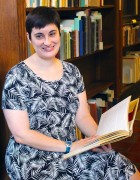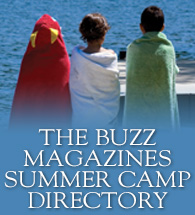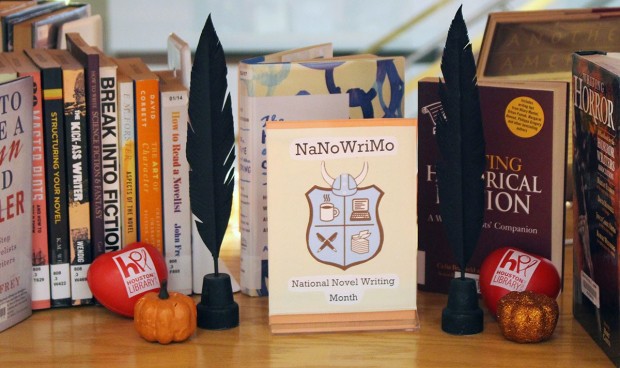Calling all Novelists - it’s NaNoWriMo!

Book Buzz is a blog produced in collaboration with neighborhood librarians from Houston Public Library, Harris County Public Library and the Bellaire Library.
In my previous columns, I have made recommendations of books to read that were significant to me or that I just thought were interesting. But what of all those wonderful books out there that have yet to be written? No, I am not making book recommendations from the future - although being able to do so would be an interesting, albeit extremely nerdy party trick.
This column is dedicated to all the aspiring writers out there and will feature suggested titles about the craft of writing and breaking into the publishing market. Why, you may ask? Because it’s November - NaNoWriMo! NaNoWriMo or National Novel Writing Month is an annual internet based creative writing project that takes place in the month of November in which the goal is for participants to write a 50,000-word manuscript in the days between Nov. 1-30. This is about quantity over quality; writers are to focus on completing their first draft and getting into a habit of writing every day. Later, the months of January and February are designated for revising and meeting up with agents and publishers. Those who achieve the goal of 50,00 words by the deadline win a prize. What is the prize, you may ask? That they just wrote a novel! And, presumably that they get to sleep now.
The NaNoWriMo website provides a supportive community for participants, called “‘wrimos” and features tips on how to get through writer's block, information on group meetups so wrimos can work in a collaborative setting, and pep-talks from established writers. Additional programs offered by the NaNoWriMo organization include laptop lending for those who don’t have their own computers, a young writers workshop and various “Now What” activities where wrimos dive into the task of editing those 50,000 words they spent all November writing.
The program first began in 1999 with 21 participants (the few, the proud, the brave...the likely over-caffeinated) madly typing away. Since then, it has graduated to over 200,000 members who have written a total of over three billion words. And some of those billions of words are from published authors! A few titles that started out as NaNoWriMo projects include Water for Elephants by Sara Gruen, The Night Circus by Erin Morgenstern and Fangirl by Rainbow Rowell. So, if you have a notebook full of scribbled plot ideas or a file on your computer of characters in search of an ending...now is your chance! Check out some of these books and, while you’re at it, also check your local library to see if they are hosting any NanoWriMo events. Houston Public Library locations hosting NanoWriMo write-ins include Young, Carnegie and Mancuso. Or start one of your own! All HPL locations have free Wi-Fi and many have study rooms or meeting spaces so stake out a table by yourself or with some friends and get writing! Maybe your work will be one of the titles everyone will be reading and recommending to others one day.
If you want one title that has it all:
The complete handbook of novel writing: everything you need to know to create & sell your work, 3rd edition edited by Writer’s Digest Books. This helpful one-stop guide features advice from both authors and professionals within the publishing industry on both “the craft and the business” of writing. Topics include generating ideas, connecting emotionally with readers, mastering aspects of fiction such as plot, character, dialogue and point of view, finding an agent, marketing your work, getting published - or self-publishing if you choose to do so. Features essays from major authors in a variety of genres including Dennis Lehane (Mystery), Stephen King (Horror), JoJo Moyes (Historical Fiction and Romance), George R.R. Martin (Fantasy) and Lee Child (Thrillers and Suspense.)
Works on specific aspects of writing:
The art of character: creating memorable characters for fiction, film, and tv by David Corbett. Written by a New York Times bestselling author, creative writing teacher and former private investigator, Corbett offers a helpful blueprint for creating memorable and realistic characters a reader can root for (or perhaps love to hate) who linger long in the memory. Topics include developing character motivation, the power of secrets and contradictions in developing complex characters (and advancing plot) and useful techniques for crafting dialogue and scenes.
The fiction writer's guide to dialogue: a fresh look at an essential ingredient of the craft by John Hough Jr. Hough, an author, editor and former speechwriter, analyzes this sometimes-overlooked aspect of a successful novel with examples from writers who elevate dialogue to an art form including Elmore Leonard, Cormac McCarthy and Annie Proulx. Topics include choreographing dialogue between multiple characters, the use of accents, dialect and vernacular and balancing dialogue with description - showing not merely telling.
The plot whisperer: secrets of story structure any writer can master by Martha Alderson. The author’s main thesis is to break a novel down into four key points: the End of the Beginning, the Middle, the Crisis and the Climax. Using examples from classic works such as To Kill a Mockingbird, East of Eden and Lord of the Flies, Alderson asserts that by following this structure a writer builds suspense, reveals character, engages the reader and create a conclusion that is emotionally satisfying- - and fits within the previously established narrative and character actions or motivations. Additional helpful tools include Scene Planners and Plot Trackers to keep things flowing smoothly. While this extremely structured method may not appeal to everyone, some will find it a helpful way to stay on task or simply give a writer the focus and tools they need to finally put pen to paper (or fingers to keyboard) and get started. As Alderson states, starting is half the battle!
Novel & short story writer's market, 38th edition by Robert Lee Brewer (Editor) published by Writer’s Market. An annual resource guide (this most recent one is for 2019) with constantly updated information on publishers, literary agents, writing contests, conferences and professional organizations to join with each listing containing contact information, submission guidelines and other essential tips. This is in addition to practical advice such as how to market your work or what to look for when hiring an attorney. The print edition provides access to WritersMarket.com, a searchable online database of fiction publishers. If the previously suggested titles were about the craft of writing, this one is all about the business side of things which can often be a whole other kind of overwhelming for first time authors.
Genre Specific Titles:
The Howdunit series published by Writer’s Digest and edited by multiple authors is a useful resource for mystery writers that gives your whodunits some grounding in realism. Titles include: Scene of the Crime: A Writer's Guide to Crime Scene Investigation, Body Trauma: A Writer’s Guide to Wounds and Injuries and Deadly Doses: A Writer's Guide to Poisons. The newest title in the series, Forensics: A Guide for Writers is edited by Dr. D.P Lyle, a cardiologist, author and medical consultant for television on such shows as House and Law and Order. Read these books if you want to plan the perfect crime!
Writing monsters: how to craft believably terrifying creatures to enhance your horror, fantasy, and science fiction by Philip Athans. Using famous examples from books and film from the 1950s schlock-fest Them! To Stephen King’s It, the author explores what makes monsters terrifying and memorable - everything from monstrous humans to places (haunted houses) to things (cursed objects) to what he describes as the never actually seen Lovecraftian ‘Unnamable’ or the monster within. Useful subheadings include Setting the Rules: Size, Powers and Abilities and Description, Staging the Reveal and Originality: Cliché vs. Archetype. Follow his advice and you’ll create something that will have your readers’ sleeping with the lights on.
On writing romance : how to craft a novel that sells by Leigh Michaels. An author of more than 80 romance novels including several RITA award winning titles (think the Pulitzer of the romance genre), Michaels offers a breakdown of numerous romance subgenres including historical, inspirational and paranormal and offers tips on how to create sexual tension and write love scenes, utilizing secondary characters such as the Other Woman or the Wrong Guy to build conflict, and how to give your story an oh so satisfying and swoon-worthy happily ever after. Each chapter ends with a helpful summary of the main points and the final section of the book includes practical advice on the post-writing aspects such as revising and marketing your manuscript to editors and literary agents.
See the NaNoWriMo website for more information.
Want more buzz like this? Sign up for our Morning Buzz emails.
To leave a comment, please log in or create an account with The Buzz Magazines, Disqus, Facebook, or Twitter. Or you may post as a guest.



